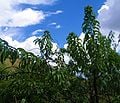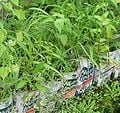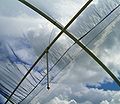| Line 17: | Line 17: | ||
'''The following is an example of plant species fit for the Central Valleys of Oaxaca:''' | '''The following is an example of plant species fit for the Central Valleys of Oaxaca:''' | ||
==Local trees:== | |||
*At 1600 to 2500m altitude, where the type of vegetation is a forest of oaks. Pedregal has planted local varieties of oaks (Quercus spp), acacia (Acacia spp) and bursera or palo mulato (Bursera bipinnata). | *At 1600 to 2500m altitude, where the type of vegetation is a forest of oaks. Pedregal has planted local varieties of oaks (Quercus spp), acacia (Acacia spp) and bursera or palo mulato (Bursera bipinnata). | ||
| Line 24: | Line 24: | ||
*Above the 275m pine forests dominate naturally. Pedregal has planted pine trees, strawberry trees and alder as well as other inhabitants in their different elevations including: nanche gourd (Malphigia), zompantle (Erythrina), cazahuate (Budleja), poinsettia (Euphorbia), wild guava, acacia (Acacia), May flower (Plumeria), copal (Bursera), plum Creole (Spondias), bald cypress (Taxodium), manual leon (Oreophanax), sweetgum (Liquidambar) cuajilote (Paramenteria), mesquite (Prosopis). <ref> Lopex, Laura. L., Esteva, Gustavo., Consejo, Juan J., Padilla, Eugenio., Robles, Marcela., and Alejandre, Virginia. Defensa Ecologica: Manual de Tecnicas. 2a. edition. Oaxaca, 1998.</ref> | *Above the 275m pine forests dominate naturally. Pedregal has planted pine trees, strawberry trees and alder as well as other inhabitants in their different elevations including: nanche gourd (Malphigia), zompantle (Erythrina), cazahuate (Budleja), poinsettia (Euphorbia), wild guava, acacia (Acacia), May flower (Plumeria), copal (Bursera), plum Creole (Spondias), bald cypress (Taxodium), manual leon (Oreophanax), sweetgum (Liquidambar) cuajilote (Paramenteria), mesquite (Prosopis). <ref> Lopex, Laura. L., Esteva, Gustavo., Consejo, Juan J., Padilla, Eugenio., Robles, Marcela., and Alejandre, Virginia. Defensa Ecologica: Manual de Tecnicas. 2a. edition. Oaxaca, 1998.</ref> | ||
==Local shrubs and succulent plants== | |||
Huizaches, sagebrush, bromeliads, and cacti (organos, nopal, agave, barrel cactus, lettuce cactus, and perezquia). | |||
==Non-local ornamental plants and fruit== | |||
Avocado, hawthorn, nancy, apple, quince, peach, lemon, orange, fig, mandarin, banana, mango, mamey, coffee, pomegranate, poplar, cassava, jacaranda, paradise, papaya, laurel, and many more have been planted. | |||
<gallery> | <gallery> | ||
Revision as of 02:02, 20 September 2010
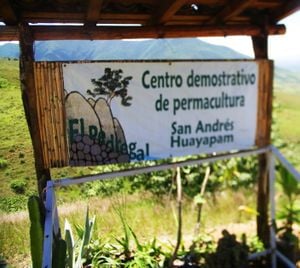
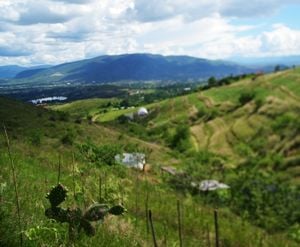
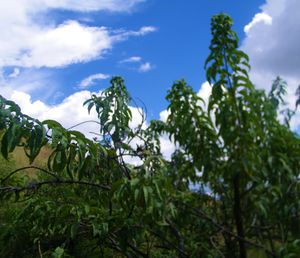
Intro
Forests help stabilize soil, prevent erosion into water ways, and slows water flow from rain so that there is increased time for percolation into aquifers as well as offering many other ecosystem services. To regenerate ecosystems it is useful imitate nature: plant native plants - not only trees but also shrubs and herbs - and to encourage natural regeneration in places that are not too damaged. In other highly deteriorated areas Pedregal starts by stabilizing the soil before planting any tree. The reforestation plan includes how to care for the plants as well as how to irrigate them when planting. This is one project in a series of soil conservation, groundwater recharge, and farming demonstration projects at Pedregal a Permaculture Demonstration Center in San Andres Huayapam, Mexico.
Benefits
Selecting plants
The selection depends on the objectives, location and availability of plants, among other things. In general it is convenient to use a considerable variety of species, preferably local or at least adapted to the place. The use of exotic species such as eucalyptus and casuarina, prevents the restoration of vegetation local to the place and can create environmental problems from its large consumption of water and rapid growth. When choosing plants for reforestation choosing those in relation to each other and the local land is an important aspect of the design.
The following is an example of plant species fit for the Central Valleys of Oaxaca:
Local trees:
- At 1600 to 2500m altitude, where the type of vegetation is a forest of oaks. Pedregal has planted local varieties of oaks (Quercus spp), acacia (Acacia spp) and bursera or palo mulato (Bursera bipinnata).
- At 2500 to 2750, where forests of pines and oaks grow, the local trees planted by Pedregal include: teocotes (Pinus spp.), local oaks, strawberry trees (arbutus granulosa), alder (Alnus acuminata) and romerillos (Pseudosuga).
- Above the 275m pine forests dominate naturally. Pedregal has planted pine trees, strawberry trees and alder as well as other inhabitants in their different elevations including: nanche gourd (Malphigia), zompantle (Erythrina), cazahuate (Budleja), poinsettia (Euphorbia), wild guava, acacia (Acacia), May flower (Plumeria), copal (Bursera), plum Creole (Spondias), bald cypress (Taxodium), manual leon (Oreophanax), sweetgum (Liquidambar) cuajilote (Paramenteria), mesquite (Prosopis). [1]
Local shrubs and succulent plants
Huizaches, sagebrush, bromeliads, and cacti (organos, nopal, agave, barrel cactus, lettuce cactus, and perezquia).
Non-local ornamental plants and fruit
Avocado, hawthorn, nancy, apple, quince, peach, lemon, orange, fig, mandarin, banana, mango, mamey, coffee, pomegranate, poplar, cassava, jacaranda, paradise, papaya, laurel, and many more have been planted.
-
Fruit trees provide food and soil stabilization
-
Polyculture planting of cactus, fruit trees, and corn.
-
Local tree species with spines to protect itself
-
Cactus plant re-vegetation for arid areas
-
-
-
Old tetra pack reused for establishing baby plants.
-
-
-
-
Nursery full of baby trees and local shrubs.
References
- ↑ Lopex, Laura. L., Esteva, Gustavo., Consejo, Juan J., Padilla, Eugenio., Robles, Marcela., and Alejandre, Virginia. Defensa Ecologica: Manual de Tecnicas. 2a. edition. Oaxaca, 1998.





